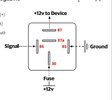You should never design anything without specs. Otherwise, you will make a lot of assumption errors and have no tests planned to verify the design is ok.
The simple relay operation is not so simple when reactive loads are used. This release time on inductive loads is what creates the flyback arc voltage on the contacts that will burn the silver alloy much faster than a resistive load. A lower MAY SWITCH spec. for coil current
will extend this time and a lower diode resistance will extend this time due to the low resistance in a saturated coil snubber diode. The inductive load must also have a snubber on the contacts to protect it but now at much higher power levels than the relay coil snubber.
Low current snubbers may be resistive to protect the Vceo of the NPN transistor where Icoil * R =< 90% Vceo but if the relays have a very low MAY SWITCH OFF Threshold << 30% then a Zener and diode in series is best with a transistor that is much higher Vceo rating than the common 40V PN2222A.
Note that this 10A relay fails rapidly after a 7ms inductive load great than 4 A.
Those who do not understand why some Relays fail faster than others may appreciate Omron's excellence for reliability but not be aware of the assumptions. Omron once had over 15 yrs ago far more technical data and also invented moving coil technology but has since retracted most of this in favour of promoting solid-state relays.
- from
archive.org
- The turn-off time is mechanically 5ms, but electrically Tau is controlled by snubbing resistance, Rs
- Resistive snubber voltage must be less than Q1 Vceo breakdown voltage V= Icoil*Rs.
- This has serious implications considering the flyback contact voltage will ionize in microseconds and quickly reach arc temperatures as the silver alloy contact surface heats up and degrades.
Let's examine the specs.:
- mechanical life 10 million cycles
- electrical life 0.1 million cycles resistive only 0.1A 5Vdc 2-sec cycle (minimal contact temp. rise)
- If you extrapolate the above test for Ir = 7A DC , I expect MTBF to reduce with resistive non-arc switches to MTBF/10
What happens with inductive loads on power contacts not protected from arcing?
TE article describes how the hot contacts from inductive arcs become stuck, and welded together.
Relay users often desire to know the inductance of the relay coil they are using so they can determine the energy released by the coil upon de-energization.
Coil inductance with the armature seated is greater than that when unseated. This is because inductance varies directly with incremental permeability ( µ ) and inversely with the length ( l ) of the magnetic circuit path. The air gap in the magnetic circuit of an unseated armature both decreases µ and increases l. Of course, the greater the inductance, the greater the energy released into the coil circuit upon de-energization.
Inductance also will vary with coil voltage, since permeability varies with magnetizing force which, in turn, is determined by coil voltage. For values most meaningful to the circuit designer, inductance should be measured under conditions that simulate actual relay service; that is, at rated voltage and current.
Inductance with the armature seated represents actual application conditions at the instant coil power is removed. When coil power is removed, the coil generates a counter voltage, -e = L(di/dt), which is fed back into the switch circuit. Depending on energy levels, this voltage surge may adversely affect the life or operational characteristics of the switch that controls the relay coil. ( For methods to protect the switch, see "
Coil Suppression Can Reduce Relay Life", 13C3264.)
The inductance of DC coils should be measured by the L = tR method by use of an oscilloscope. This method requires the application of rated DC voltage to the coil while physically holding the armature seated. The value, t, is the time for coil current to increase to .623 of its steady state value, and R is the coil DC resistance in ohms as measured by an ohmmeter.
The inductance of AC coils may be determined by measuring coil voltage and current and actual power consumed by the use of a wattmeter. The product of coil voltage and current is the "VA" in the following equation, "W" is the power as given by the wattmeter. R = measured DC resistance in ohms.
If a wattmeter isn't available, inductance may be determined by use of a dual-trace oscilloscope, one input of which is fed by a current probe. In this method, rated voltage at the proper frequency is impressed on the coil, and the time displacement, t, of applied voltage and coil current is measured by the oscilloscope. Inductance is calculated as above, where:
t = time in ms by which coil current lags coil voltage
Understand relay-coil inductance to determine the energy released by the coil upon deenergization

www.te.com
But when properly and conservatively designed, Relays ought to last 10k to 100 k cycles depending on the quality of the design and the components.





